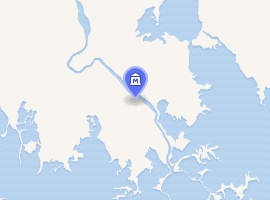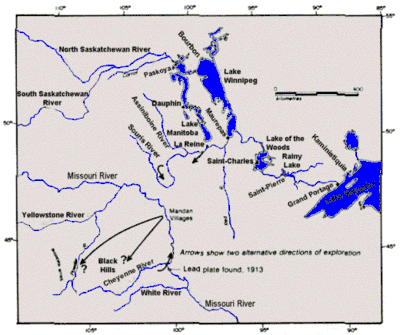Fort Paskoya
Fort Paskoya or Paskoyac or Pasquia was a French fort and trading post on the lower Saskatchewan River above Cedar Lake. Around 1740 La Vérendrye built four forts to control the chain of lakes west of Lake Winnipeg. These were Fort Pascoya, Fort Bourbon, Fort Dauphin and Fort La Reine. Their purpose was to trade in furs and to divert to Montreal furs that had previously gone to the English on Hudson Bay. Pascoya had a good location because most of the furs from the west and northwest came down the Saskatchewan. The forts were also part of a quest for a river that led to the western sea, which Verendrye now thought was the Saskatchewan.

| |
| Established | 1741 -1742 |
|---|---|
| Location | the Pas Manitoba Canada |
| Type | historic site museum |

It was named after a Cree word for narrows, or after the Opaskwayak Cree Nation, whom the explorers encountered. "Paskoyac" was also an old name for the Saskatchewan River. There is also a Pasquia River at The Pas.
First Paskoya: In 1740 Louis-Joseph Gaultier de La Vérendrye mapped the west side of Cedar Lake. During the winter of 1741-42, the elder La Vérendrye decided to build a fort on a small island where the river discharges into Cedar Lake. This post soon became a minor outpost of the first Fort Bourbon. The second Fort Bourbon was probably built nearby.
Second Paskoya: The second Fort Paskoya was built upstream at what is now The Pas. Morton[1] thinks it was built in 1750 and first occupied by Joseph-Claude Boucher, Chevalier de Niverville. In 1753 or 1754 it was strengthened by Louis de la Corne, Chevalier de la Corne. In 1754 it was visited by Anthony Henday who described it as a "hogstye". It was closed in 1759 during the fall of New France. In 1775 Alexander Henry the elder was blocked near here by a chief called The Pelican who demanded tribute to continue up the river. About the same time the Frobishers had a single trader on the site. The North West Company seems to have had a post here which was taken over by the Hudson's Bay Company.
References
- Elizabeth Browne Losey, "Let Them be Remembered: The Story of the Fur Trade Forts",1999
- Arthur Morton, "A History of the Canadian West",page 236
- Champagne, Antoine (1968-69 Season). "The Vérendryes and Their Successors, 1727-1760". MHS Transactions. Manitoba Historical Society. Series 3 (25). Check date values in:
|date=(help) - Some Historical Names